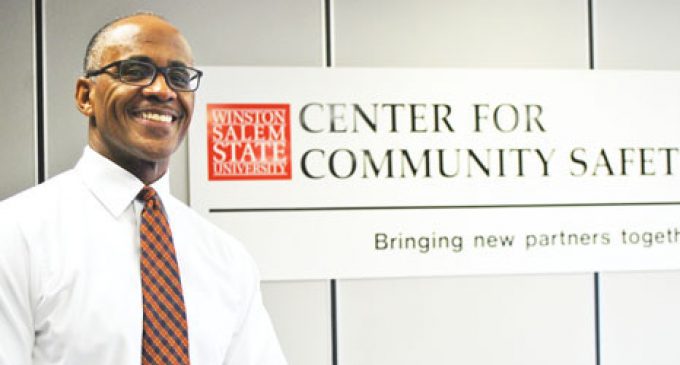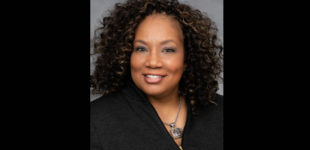Center to probe minority youths’ disproportionate entanglements with justice system

Winston-Salem State University’s Center for Community Safety has been tapped to play an integral role in a statewide study that could change the conversation surrounding minorities in the juvenile justice system.
The Center, which was established in 2001, was selected last spring by the NC Governor’s Crime Commission and the North Carolina Department of Public Safety to explore the contributing factors that cause African American and Latino youth to land in the juvenile justice system more often than their white counterparts, and to offer some recommendations on best practices discovered in cities and counties across the state that have affected real change with respect to Disproportionate Minority Contact (DMC) with law enforcement and the legal system in their local communities.
“I think it’s really a feather in the cap of Winston-Salem State to have been selected for this project,” said Executive Director Alvin Atkinson. “I’m pleased because it sort of validates where we (as a Center) are headed.”
The study will be the first statewide research project the Center has conducted since its inception, and represents a conscious effort it has made in recent years to get back to its founding principles, by focusing on hands-on approaches to implementing programs and models that will affect positive change in the community, Atkinson explained.
“It’s so aligned with what we are created to do,” he remarked. “The next step is to get this information and see how we can use this data to impact the lives of minority youth who have been over-represented in the justice system for years.”
Funded by a grant totaling just under $100,000, the statewide study will look at data for each of North Carolina’s 100 counties, as well as programs that exist in the area, to assess what practices are most effective in addressing disproportionate minority contact, Atkinson explained. Focus groups in each of the state’s four regions will provide additional information that researchers can then present to members of the Governor’s Crime Commission and the Department of Public Safety when the assessment is complete in December, he said.
Four WSSU faculty members are leading the study. Dr. Tiffany Baffour, director of the Center for Excellence in Teaching and Learning is principle investigator for the project.
“The research study will use mixed methods including quantitative and qualitative data analysis to examine the presence of significant racial variances along the continuum of decision points within (the) juvenile justice system, as well as the mechanisms and discernible contributors to DMC,” Baffour said in a statement from the University. “Ultimately, our aim is to assist policy makers with implementing and supporting strategies that will reduce DMC throughout juvenile justice systems across the state.”
Cutting down on the presence of youth of any background in the juvenile justice system is fiscally responsible, because the programs juvenile detention centers are required to offer are far more extensive and costly than that of their adult counterparts, Atkinson said.
“It’s more costly too, in the juvenile arena, so we think that there’s an economic incentive,” he commented. “We may actually be helping our economy by making good decisions.”
The Center conducted a similar study on DMC at the county level six years ago, but the recommendations it made weren’t internalized by local agencies as much as researchers had hoped, Atkinson said. He believes the statewide assessment may be able to spark a reaction and receptivity to real change that the local study couldn’t.
City native Marilyn Odom, vice president of Youth Services at the YWCA Best Choice Center, believes the study could have a real impact on local agencies that are working to keep youth out of the juvenile justice system, by providing valuable data that can help them improve their approaches to the issue.
“I think the study that is being done across the state will definitely come up with some ideas and best practices that we can put into practice in Forsyth County so that we can have fewer young people who are disproportionately represented,” said Odom, an NC State alumna and longtime member of the Center’s Disproportionate Minority Contact Committee, a contingent of stakeholders from local programs that serve youth. “The study is looking at …alternatives to young people getting involved in the beginning, and that’s the most important part.”
Odom, who has worked to reduce DMC since the ’80s, added that having evidence-based research at their disposal will help agencies secure much needed grants to help support existing programs and perhaps even launch new ones.
“When we’re looking at dollars to address these needs, every funder wants to know, ‘What are you basing your proposal on?’” she said. “They want to have those hard and fast facts.”
Atkinson said he is hopeful that stakeholders both at the state and local level will take the recommendations of the assessment seriously and commit to helping North Carolina youth stay out of the justice system for good.
“Are our systems ready to look at this data and begin being honest with themselves and each other? I don’t know, but if we don’t put this report out, we can’t ask the question,” he said. “I’m hoping that the state will be ready.”
For more information about the Center, visit http://centerforcommunitysafety.org” http://centerforcommunitysafety.org.












